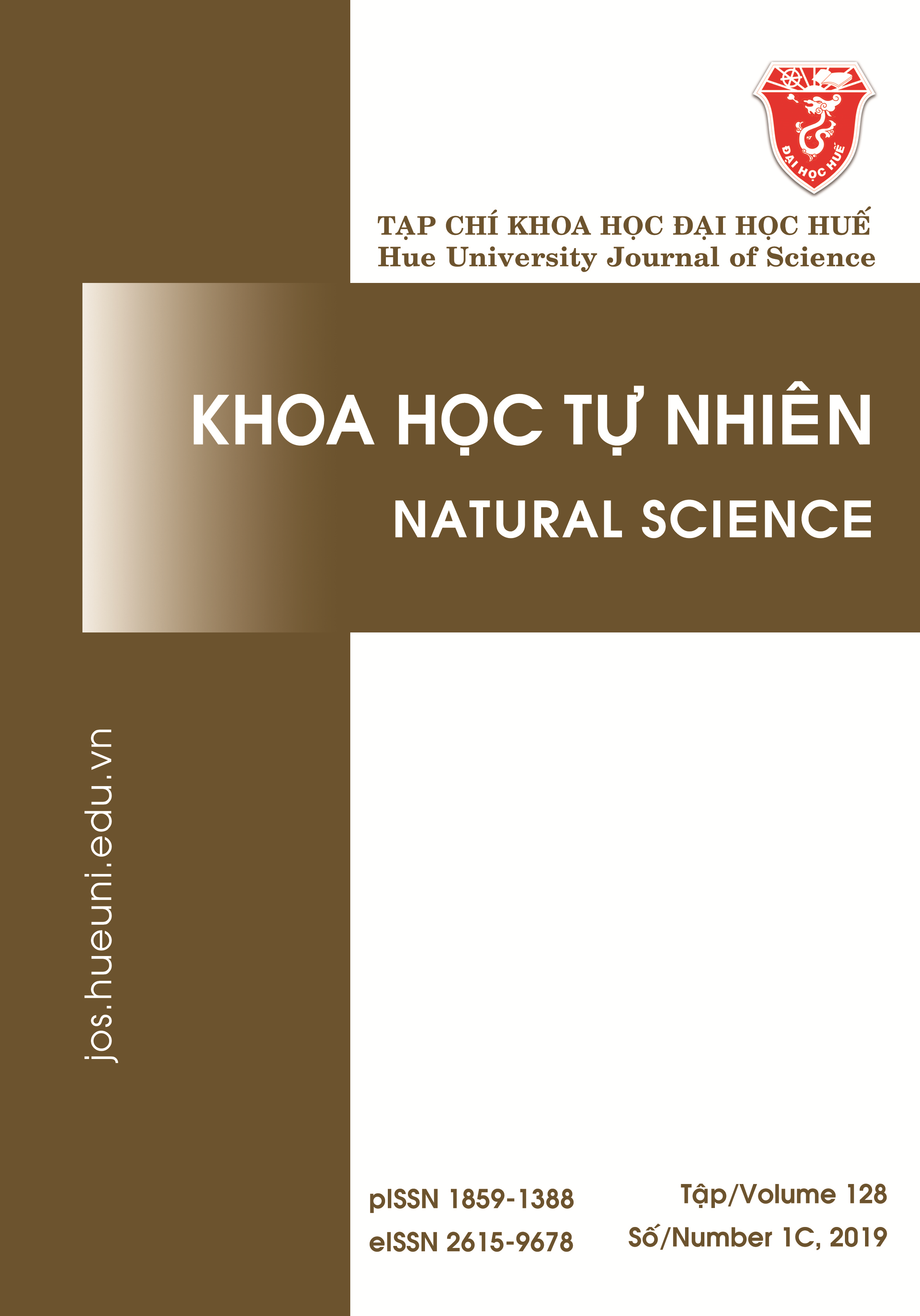Abstract
The dispersion stability of graphene in liquids plays a very important role in improving application efficiency in many fields, such as in nanofluid, composite materials, and biomedical fields. Because of the size of graphene materials greatly affects the dispersion and stability of graphene, we take a new approach of using the high-energy ball grinding methods for reducing the size and increasing the surface area of multi-layer graphene materials (GNPs). Surface measurements (FE-SEM), Raman spectroscopy, FTIR infrared absorption spectra, BET (surface area) measurements were used to evaluate the material properties, dispersion, and stability of GNPs in liquids. The results show that high-energy ball milling is a very effective method to improve the dispersion and stability of GNPs in liquids. Graphene materials milled during 5 hours has the size of GNPs of 218 nm, the surface area of 196.63 m2/g – an increase of 555% compared with original graphene; GNPs have the best dispersion stability at a Zetapotential of 29.2 mV.
References
- Novoselov KS, Geim AK, Morozov SV, Jiang D, Katsnelson MI, Grigorieva IV, Dubonos SV, Firsov AA. Two-dimensional gas of massless Dirac fermions in graphene. Nature. 2005;438(7065):197-200.
- Castro Neto AH, Guinea F, Peres NMR, Novoselov KS, Geim AK. The electronic properties of graphene. Reviews of Modern Physics. 2009;81(1):109-162.
- Lee C, Wei X, Kysar JW, Hone J. Measurement of the Elastic Properties and Intrinsic Strength of Monolayer Graphene. Science. 2008;321(5887):385-388.
- Ovid'Ko IA. Mechanical properties of graphene. Rev. Adv. Mater. Sci. 2013;34:1-11.
- Dai JF, Wang GJ, Ma L, Wu C K. Surface properties of graphene: Relationship to graphene-polymer composites. Rev. Adv. Mater. Sci. 2015;40 60-71.
- Kavitha MK, Jaiswal M. Graphene: A review of optical properties and photonic applications. Asian Journal of Physics. 2016;7:809-831
- Vashist SK, Venkatesh AG. Advances in Graphene-Based Sensors and Devices. Journal of Nanomedicine & Nanotechnology. 2013;04(01).
- Pop E, Varshney V, Roy AK. Thermal properties of graphene: Fundamentals and applications. MRS Bulletin. 2012;37(12):1273-1281.
- Van Trinh P, Anh NN, Hong NT, Hong PN, Minh PN, Thang BH. Experimental study on the thermal conductivity of ethylene glycol-based nanofluid containing Gr-CNT hybrid material. Journal of Molecular Liquids. 2018;269:344-353.
- Xu Z, Gao C. Graphene fiber: a new trend in carbon fibers. Materials Today. 2015;18(9):480-492.
- An Z, Compton OC, Putz KW, Brinson LC, Nguyen ST. Bio-Inspired Borate Cross-Linking in Ultra-Stiff Graphene Oxide Thin Films. Advanced Materials. 2011;23(33):3842-3846
- Da S, Wang J, Geng H, Jia S, Xu C, Li L, Shi P, Li G. High adhesion transparent conducting films using graphene oxide hybrid carbon nanotubes. Applied Surface Science. 2017;392:1117-1125.
- Saboori A, Dadkhah M, Fino P, Pavese M. An Over-view of Metal Matrix Nanocomposites Reinforced with Graphene Nanoplatelets; Mechanical, Electri-cal and Thermophysical Properties. Metals. 2018;8(6):423.
- Sajibul AB, Nizam U, Ferdaushi AB, Maksudul I, Sayed SH. A Review of Functionalized Graphene properties and its application. International Journal of Innovation and Scientific Research. 2015;17(2):303-315.
- Kuila T, Bose S, Hong CE, Uddin ME, Khanra P, Kim NH, Lee JH. Preparation of functionalized graphene/linear low density polyethylene composites by a solution mixing method. Carbon. 2011;49(3):1033-1037.
- Reina A, Jia X, Ho J, Nezich D, Son H, Bulovic V, Dresselhaus MS, Kong J. Large Area, Few-Layer Graphene Films on Arbitrary Substrates by Chemical Vapor Deposition. Nano Letters. 2009;9(1):30-35.
- Nguyen VT, Le HD, Nguyen VC, Tam Ngo TT, Le DQ, Nguyen XN, et al. Synthesis of multi-layer gra-phene films on copper tape by atmospheric pressure chemical vapor deposition method. Advances in Natural Sciences: Nanoscience and Nanotechno-logy. 2013;4(3):035012.
- Dong X, Wang P, Fang W, Su C, Chen Y, Li L, Huang W, Chen P. Growth of large-sized graphene thin-films by liquid precursor-based chemical vapor deposition under atmospheric pressure. Carbon. 2011;49(11):3672-3678.
- Frank O, Mohr M, Maultzsch J, Thomsen C, Riaz I, Jalil R, Novoselov KS, Tsoukleri G, Parthenios J, Papagelis K, Kavan L, Galiotis C. Raman 2D-Band Splitting in Graphene: Theory and Experiment. ACS Nano. 2011;5(3):2231-2239.
- Si C, Sun Z, Liu F. Strain engineering of graphene: a review. Nanoscale. 2016;8(6):3207-3217.
- Zhang J, Zou H, Qing Q, Yang Y, Li Q, Liu Z, Guo X, Du Z. Effect of Chemical Oxidation on the Structure of Single-Walled Carbon Nanotubes. The Journal of Physical Chemistry B. 2003;107(16):3712-3718.
- Jang J, Bae J, Yoon S. A study on the effect of surface treatment of carbon nanotubes for liquid crystalline epoxide–carbon nanotube composites. Journal of Materials Chemistry. 2003;13(4):676-681.
- Thang BH, Van Trinh P, Quang LD, Huong NT, Khoi PH, Minh PN. Heat dissipation for the Intel Core i5 processor using multiwalled carbon-nanotube-based ethylene glycol. Journal of the Korean Physical Society. 2014;65(3):312-316.
- Ghadimi A, Saidur R, Metselaar H. A review of nanofluid stability properties and characterization
- in stationary conditions. International Journal of Heat and Mass Transfer. 2011;54(17-18):4051-4068.
- Ivall J, Langlois-Rahme G, Coulombe S, Servio P. Quantitative stability analyses of multiwall carbon nanotube nanofluids following water/ice phase change cycling. Nanotechnology. 2016;28(5):055702.

This work is licensed under a Creative Commons Attribution-ShareAlike 4.0 International License.
Copyright (c) 2019 Array





